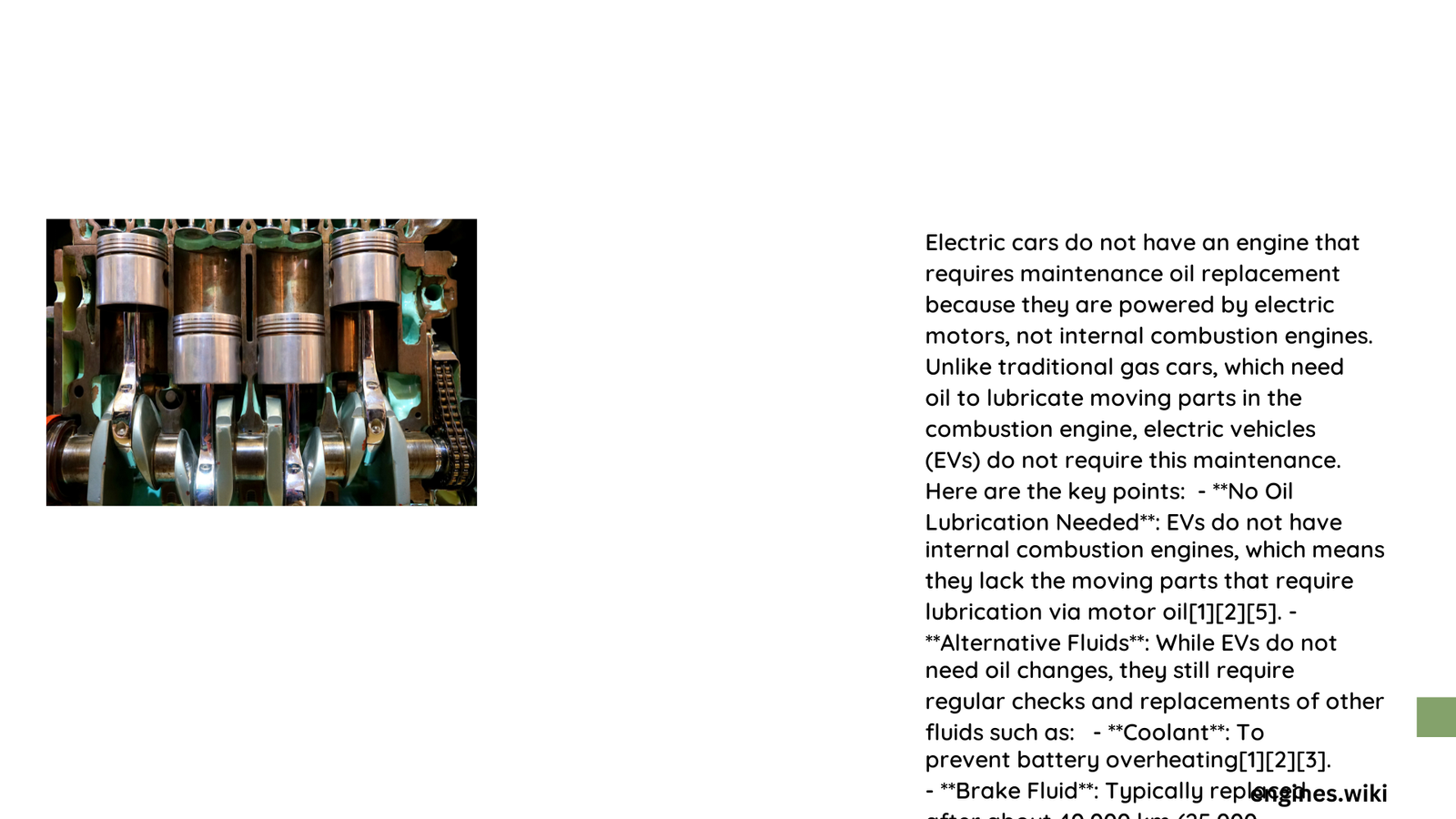Electric vehicles represent a revolutionary shift in automotive technology, fundamentally transforming how we think about vehicle maintenance. Unlike traditional gasoline-powered cars, electric cars eliminate the complex internal combustion engine, which means no more routine oil changes, reduced maintenance complexity, and significantly lower long-term upkeep costs. This comprehensive guide explores the unique maintenance characteristics of electric vehicles and why they stand apart from conventional automobiles.
Why Do Electric Cars Not Require Oil Changes?
What Makes Electric Motors Different?
Electric motors operate on fundamentally different principles compared to internal combustion engines. Instead of using mechanical combustion and numerous moving parts, they utilize electromagnetic interactions to generate motion. This critical difference means:
- Zero Mechanical Friction: Electric motors have minimal moving components
- Direct Electrical Conversion: Energy transforms directly into motion
- No Lubrication Requirements: No need for continuous oil circulation
How Do Electric Vehicles Generate Power?
| Power Source | Characteristics | Maintenance Needs |
|---|---|---|
| Battery Pack | High-density energy storage | Periodic coolant checks |
| Electric Motor | Electromagnetic propulsion | Minimal mechanical wear |
| Power Electronics | Sophisticated control systems | Occasional software updates |
What Components Do Not Exist in Electric Cars?
Electric vehicles eliminate several maintenance-intensive components found in traditional vehicles:
- Crankshaft
- Pistons
- Valves
- Connecting rods
- Timing belts
- Oil pumps
- Oil filters
What Maintenance Do Electric Cars Actually Require?

Fluid Management in Electric Vehicles
While electric cars do not need oil replacement, they still require periodic fluid maintenance:
- Coolant System: Ensures battery and motor temperature regulation
- Brake Fluid: Supports regenerative braking mechanisms
- Windshield Washer Fluid: Standard replacement needs
- Transmission Fluid: Rare replacement, typically once in vehicle lifetime
Battery Health Considerations
The battery represents the most critical component requiring periodic attention:
- Temperature Management: Crucial for performance and longevity
- Charging Cycle Monitoring: Prevents premature degradation
- Periodic Diagnostic Checks: Ensures optimal performance
What Cost Benefits Emerge from Reduced Maintenance?
Financial Advantages
- Lower Maintenance Costs: Approximately $300-$500 annual savings
- Fewer Service Center Visits: Typically once per year
- Extended Component Lifespan: Reduced mechanical wear
Environmental Impact
- Zero Tailpipe Emissions
- Reduced Carbon Footprint
- Sustainable Transportation Technology
What Long-Term Performance Can Owners Expect?
Durability and Reliability
- Electric motors can last 15-20 years with proper maintenance
- Fewer moving parts mean reduced mechanical failure risks
- Battery technology continues improving rapidly
Performance Consistency
- Consistent torque delivery
- Minimal performance degradation
- Lower overall maintenance complexity
Conclusion
Electric vehicles represent a paradigm shift in automotive technology, offering unprecedented maintenance simplicity and environmental benefits. By eliminating traditional engine complexities, they provide a more sustainable, efficient transportation solution.
Key Takeaways
- No oil changes required
- Minimal maintenance needs
- Significant long-term cost savings
- Environmentally friendly technology
Reference:
1. Kia Mauritius – Electric Car Maintenance
2. TotalEnergies – EV Technology Insights
3. Jiffy Lube – Electric Vehicle Maintenance Guide
